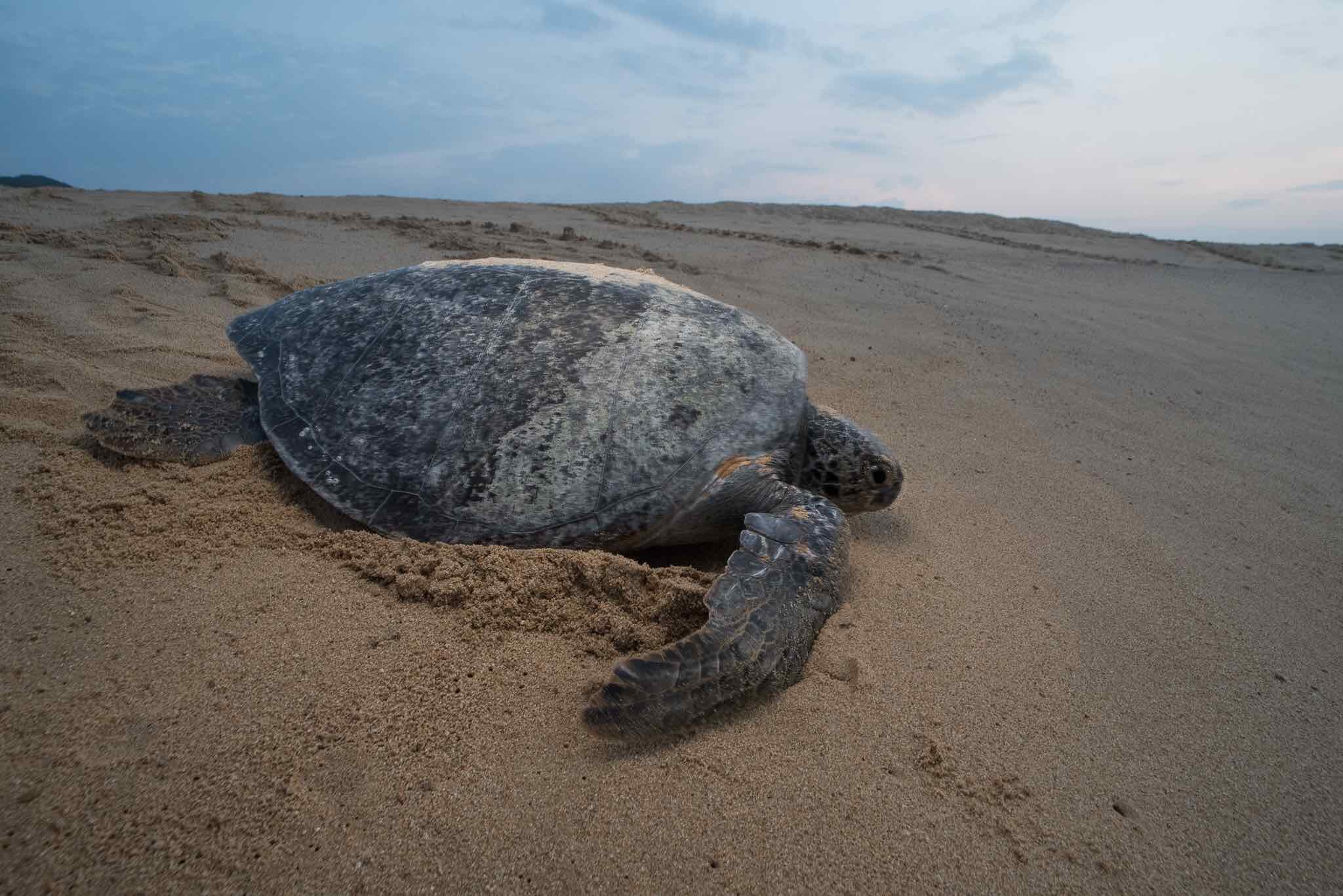
Green Sea Turtles
The green sea turtle is the second largest after the leatherback. They can weigh up to 500 lbs (225 kg) and reach four feet (1.2 m) in length. The adult is an herbivore, dining on sea grasses, seaweeds, algae and other forms of marine plant life. Their beak is sharp and finely serrated, perfectly adapted for grazing in seagrass beds and scraping algae off of hard surfaces.
This species is the only one to come on shore regularly to bask. Basking only occurs in Hawaii, particularly the Northwestern Hawaiian Island chain, the Galapagos Islands, and in some areas of Australia.
Green Sea Turtle Facts & Tidbits
These turtles are believed to improve the health of seagrass beds and associated microhabitats. They will graze the beds, taking off the tops of leaf blades, while avoiding the roots. The seagrass will grow healthier and faster with a daily trim!
Some greens in the Eastern Pacific are considered Pacific black turtles and some researchers believe they may be a separate species as opposed to their current status as a sub-species. Their coloration is not black, but their skin pigmentation is darker than other green turtles, making them appear darker overall. They are also smaller and their carapace is slightly different in shape.
Their name comes from the color of their fat, not their shell, as commonly believed.
They are listed as Endangered in the US and around the world by the IUCN Red List.
Their scientific name is Chelonia mydas.
Distribution
This species can be found in the sub-tropics and tropics worldwide, with major nesting beaches in Tortuguero (Costa Rica), Oman, Florida, and Raine Island (Australia) where thousands of turtles nest each night during peak nesting season. They are also found nesting on French Frigate Shoals in the Northwestern Hawaiian Islands, Guam, American Samoa, Suriname, Georgia, South Carolina, North Carolina, Puerto Rico, and the US Virgin Islands.
Threats
Population declines are mainly due to harvest of their eggs and meat for human consumption. Fibropapilloma (also known as FP) is a disease associated with lesions and rapid tumor growth on the eyes, mouth, and soft-skin areas, as well as internal organs. FP, believed to be connected to ocean pollution, has greatly affected their populations, especially in Florida and Hawaii, but also the Caribbean and Australia.
Other threats include plastic ingestion, boat strikes, coastal development, feeding habitat degradation, and entanglement in fishing gear.
Did You Know?
These turtles are distributed worldwide and nest in more than 80 countries. Nearly all Hawaiian Green sea turtles migrate to nest at French Frigate Shoals in the Northwestern Hawaiian Islands (NWHI), located approximately 500 miles NW of Honolulu. The NWHI are designated as a refuge and are restricted to scientific research only.
There was once a turtle fishery off of Key West, Florida until they were protected in the 1970’s. Today at the site of the former A. Granday Turtle Cannery lies Turtle Kraals, a restaurant and bar. Captured animals were kept here prior to being exported as a delicacy around the world.
What is SEE Turtles?
We're a nonprofit organization that protects sea turtles through conservation travel and volunteer tours, our Billion Baby Turtles, Too Rare To Wear, & Sea Turtles & Plastic programs, our education programs, and by promoting inclusivity in the sea turtle community. Our award-winning programs help save sea turtle hatchlings on important nesting beaches around the world, work with the tourism industry to end the turtleshell trade, and get plastic out of sea turtle habitats. Learn more about our organization.
Photo credits: Neil Ever Osborne, Hal Brindley


